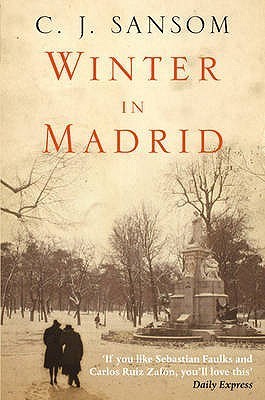by Jonathan Littell
Paperback Edition, 983 pages
Originally published 2006
“So what’s the most atrocious thing you’ve seen?” He waved his hand: “Man, of course!”

Max Aue made it to the big time in the higher echelons of the Nazi regime and years later he’s decided to write his biography in an attempt to cleanse his soul and set the record straight.
I’m going to review and score each chapter:
- Toccata – Max lays down his intentions to tell his story. A good opening chapter that immediately lures you in and makes you pay attention. 4/5
- Allemande 1 & 2 – Max is in Ukraine as an officer in the extermination squads who are systematically executing Jews, Communists and Soviets; thousands are nonchalantly disposed of. What’s so disturbing isn’t the act of killing or the number of deaths but the blase language the officers use to plan the most effective method. There is a sizable chunk written about language origin, which went on way too long but otherwise a strong chapter which sets the tone for the rest of the book. 4/5
- Courante – Max is re-assigned to Stalingrad just before the Germans capitulate. He is witness to the deplorable conditions and poor decision making that ultimately leads to their defeat. The prose is superb as the author paints a hauntingly bleak picture of one of the pivotal battles of WW2. 5/5
- Sarabande – Max is recovering in Berlin after the brutality of Stalingrad. He decides to visit his Mother for the first time in many years. We learn more about his family past and his ‘special’ relationship with his sister. This chapter is a kind of interlude which temporarily shifts focus away from the War. 5/5
- Menuet en Rondeaux – Max is now working for Himmler and is sent on a supervisor/investigatory mission to the famous concentration camps. He tries to improve the camps conditions with a better diet and less hostile treatment from the guards, which would ultimately increase productivity but he soon realises that murdering the Jews is more important than manufacturing for the war. The longest and probably the standout part of the book as it provides an insight into ‘The Jewish Question’ that goes beyond the well documented death toll. 5/5
- Air – Berlin is falling so Max takes refuge in his Sisters empty house. He temporarily loses his mind and has several sexually degrading visions of his sister. This went on too long and seemed to be the author indulging in his warped, pornographic fantasies. It’s relevant to Max’s character but becomes repetitive. 2/5
- Gigue – The inevitable fall of Berlin as Max describes the utter chaos and destruction of his beloved city. It’s a fitting and worthy ending to a brilliant book. 4/5
This book is unbelievably dense with only seven chapters spanning 975 pages. The text is small and fills each page like a relentless black wave with no let up but at no stage was i tempted or driven to the point of giving up even though the task of reading this mammoth novel seemed endless. I read this over a two week period whilst reading something else concurrently as i realised from page 1 that time and patience were required. This isn’t a book you can just burn through; it requires your full attention.
One of the main feelings i have taken away from The Kindly Ones is the utter futility of the majority of our actions. Even when it becomes apparent that Germany will be on the losing side Max is still required to write and file his reports with the powers that be. Surely fictional Max would look back on those six years of WW2 and cry in horror at the hours he wasted writing reports that ultimately burned to ash. But this resonates in every job i’ve ever had. I sit at my desk filling in sales spreadsheets and processing orders that nobody will care about in five years. It’s insane!
My score – 4/5








